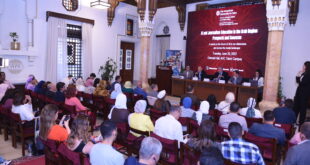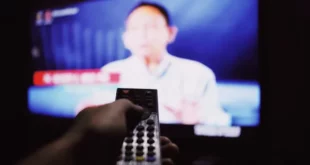Issue 37, Winter/Spring 2024 https://doi.org/10.70090/MH24RVSP Abstract The integration of artificial intelligence (AI) into media has rendered it crucial to comprehend public acceptance of this technology. The four comprehensive models developed and tested in this research employ structural equation modelling, which offers a thorough analysis of the factors influencing public acceptance …
Read More »Egypt
Artificial Intelligence Divide Between Digital Immigrants and Natives in Egypt (Arabic)
Issue 37, Winter/Spring 2024 https://doi.org/10.70090/AFA24DDI Abstract The study explores the artificial intelligence (AI) divide in Egypt while considering the moderating influence of age/generation. The research compares digital natives born in the digital age vis-à-vis digital immigrants who grew up in less technologically adapted environments. The study uses the UTAUT2 model …
Read More »The Attitudes of Journalists Toward Written Content Generated by AI
Issue 37, Winter/Spring 2024 https://doi.org/10.70090/AMEN24AI Abstract This experimental study investigates the attitudes of journalists towards written content that is generated by artificial intelligence (AI) when compared to human-written journalistic pieces. The methodology utilized a comparative experiment that relied upon four journalists and three AI platforms, which respectively wrote an article …
Read More »Forum Review: Artificial Intelligence and Journalism Education in the Arab Region – Prospects and Concerns
As this issue of Arab Media & Society has a theme of ‘Media & Artificial Intelligence’ it provides the opportunity to reflect upon the forum hosted by the Kamal Adham Center for Television and Digital Journalism in the School of Global Affairs and Public Policy at the American University in …
Read More »Between empathy and victim-blaming: the effect of personal ideologies and identities on users’ perception of the self-reported gender-based violence posts on Facebook in Egypt
Issue 36, Summer/Fall 2023 https://doi.org/10.70090/MN23BEVB Abstract The advent and proliferation of digital technology, particularly social media, has provided a potential voice to voiceless people. This capacity enables public shaming of sexual perpetrators as evinced via public accusations leveled against celebrities regarding sexual harassment, which resulted in some celebrities losing work …
Read More »Challenging Gender Roles Through Brand Storytelling
Issue 36, Summer/Fall 2023 https://doi.org/10.70090/AE23CGRB Abstract This article examines brand storytelling and utilizes a qualitative analysis of two advertising campaigns. This article endeavors to research this content as a means of inspiring positive change, challenging stereotypes, and promoting gender equality. The research focuses on two distinct advertising campaigns, which are …
Read More »Feminist Markers in Contemporary Arabic Songs: Analytical Study of Discourse and Gender (Arabic)
Issue 36, Summer/Fall 2023 https://doi.org/10.70090/ASH23FMC Scroll down for Arabic abstract. This study traces feminist markers by analyzing expressions of feminism in popular Arab songs across various media through the feminist and social role theoretical frameworks. The applied portion of the study is limited to YouTube. For the methodological framework, the …
Read More »Feminist Markers in Contemporary Arabic Songs: Analytical Study of Discourse and Gender (English translation)
Issue 36, Summer/Fall 2023 https://doi.org/10.70090/ASH23FME Abstract This study traces feminist markers by analyzing expressions of feminism in popular Arab songs across various media through the feminist and social role theoretical frameworks. The applied portion of the study is limited to YouTube. For the methodological framework, the study adopts a mixed …
Read More »Impact of Target-Audience Characteristics on the Portrayal of Women in TV Commercials
Issue 36, Summer/Fall 2023 https://doi.org/10.70090/AT23ITAC Abstract For over five decades, scholars have examined depictions of women and men in advertising and media, including the analysis of stereotypes, cultural implications, and social consequences. This research aims to analyze the relationship between target audience characteristics, such as gender and socioeconomic class, and …
Read More »Arab Women’s Revolutionary Art: A Book Interview with Dr. Nevine El-Nossery
Issue 36, Summer/Fall 2023 https://doi.org/10.70090/SK23AWRA Dr. Sahar Khamis interviewed Dr. Nevine El-Nossery regarding her new book titled Arab Women’s Revolutionary Art: Between Singularities and Multitudes, which explore the ways women in the contemporary MENA region (Middle East and North Africa) have re-imagined revolutionary discourses—through creativity and collective action—as a means of resistance. Sahar: …
Read More » Arab Media & Society The Arab Media Hub
Arab Media & Society The Arab Media Hub









